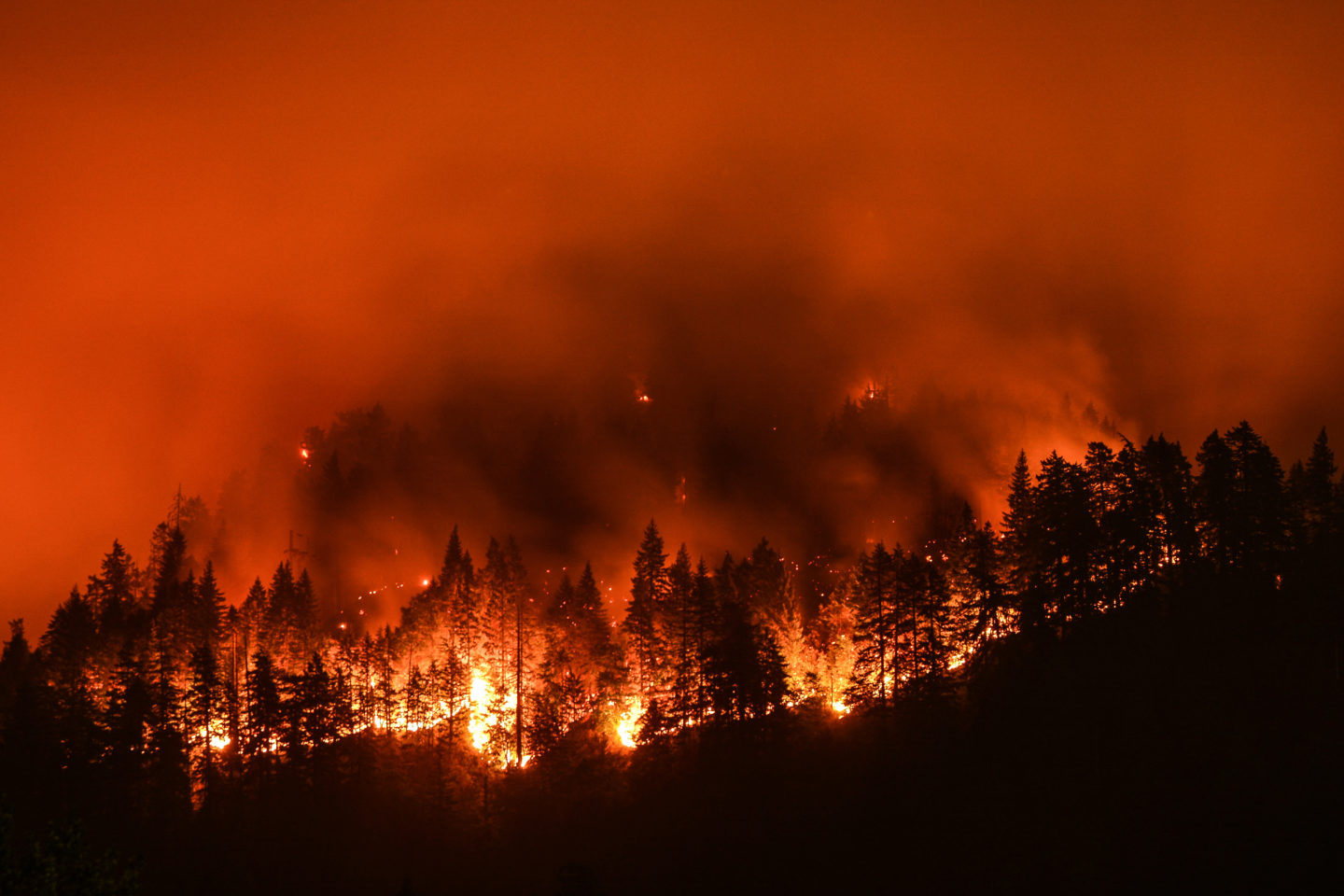Wildfires Threaten Oregon’s Cannabis Industry
FeaturedOregonTrending Stories September 11, 2020 MJ Shareholders 0

The devastating wildfires that have ravaged the West Coast this week are posing a threat to Oregon’s marijuana industry.
The Oregonian, citing the Oregon Liquor Control Commission, reported that “an estimated 20 percent of state-licensed marijuana businesses – roughly 408 – face some level of evacuation,” which includes “stores, marijuana processors and producers.”
According to the newspaper, the Commission said “73 marijuana producers, most of them outdoor farms, have been ordered to evacuate,” with many of the operations affected concentrated in the southern portion of the state that the paper said is “synonymous with outdoor cannabis cultivation.”
“Early Wednesday, wildfires encroached on Josephine County’s Takilma, prompting an evacuation order of the counter-culture enclave long associated with cannabis…Josephine and Jackson counties are home to 62 percent of Oregon’s outdoor marijuana producers, according to the Oregon Liquor Control Commission,” the Oregonian’s report said.
Marijuana in Oregon
Oregon voters approved a measure in 2014 legalizing recreational marijuana use for adults. The state issued its first recreational licenses for dispensaries in October of 2016, and since then, the industry has swelled to one that generates major revenue for Oregon.
The Portland Business Journal reported in January that “Oregon recreational cannabis showed continued strength in 2019, with retail sales rising 24.1 percent,” which came on the heels of a year of 29.1 percent growth in 2018.
In 2017, the first full year of recreational marijuana, sales totaled $452.4 million, according to data from the Oregon Liquor Control Commission. In 2018, they rose to $584.5 million. Then last year [in 2019], sales reached $725.8 million,” the Journal reported. “Those figures don’t include sales to patients in the state’s medical marijuana program, who despite declining numbers have steadily purchased between $60 million and $70 million worth of products in the past three years.”
That figure may balloon even more in 2020, as Oregon, like other states, experienced a surge in recreational marijuana sales at the outset of the COVID-19 pandemic.
In April, recreational marijuana sales in Oregon reached $89 million, which amounted to a 45 percent increase compared to April of 2019.
The cannabis research company Headset reported earlier this year that on March 16, when much of the country was hunkering down at home for weeks in quarantine, adult marijuana sales in Oregon were a whopping 75 percent higher than the previous four weeks.
One imagines some of those sales are coming from Oregon’s neighbors to the east. A report published earlier this year by the Oregon Office of Economic Analysis that “Oregon sales per adult along the Idaho border are 420%” above the state average. Yes, actually 420 percent.
“Obviously recreational marijuana is not legal in Idaho, but even after throwing the data into a rough border tax model that accounts for incomes, number of retailers, tax rates and the like, there remains a huge border effect,” one of the authors of the study wrote. “Roughly speaking, about 75% of Oregon sales and more like 35% of Washington sales in counties along the Idaho border appear due to the border effect itself and not local socio-economic conditions.”
MJ Shareholders
MJShareholders.com is the largest dedicated financial network and leading corporate communications firm serving the legal cannabis industry. Our network aims to connect public marijuana companies with these focused cannabis audiences across the US and Canada that are critical for growth: Short and long term cannabis investors Active funding sources Mainstream media Business leaders Cannabis consumers











No comments so far.
Be first to leave comment below.